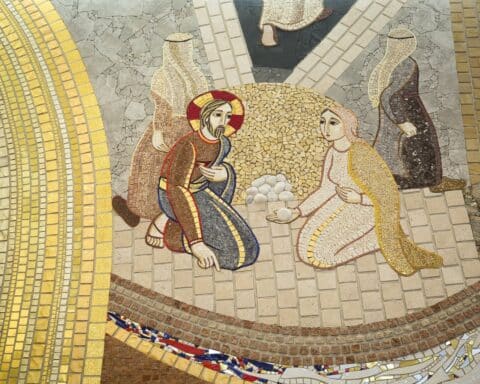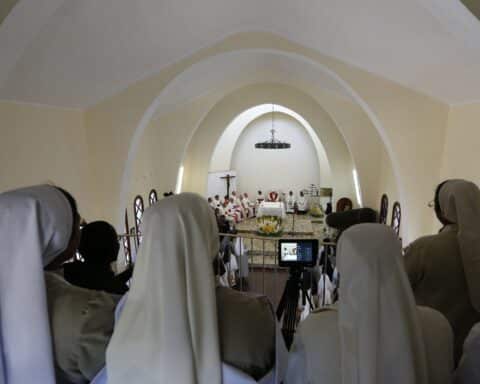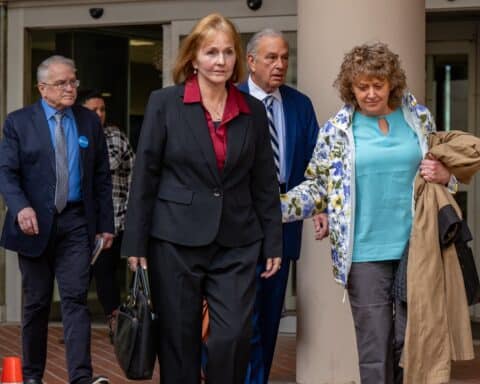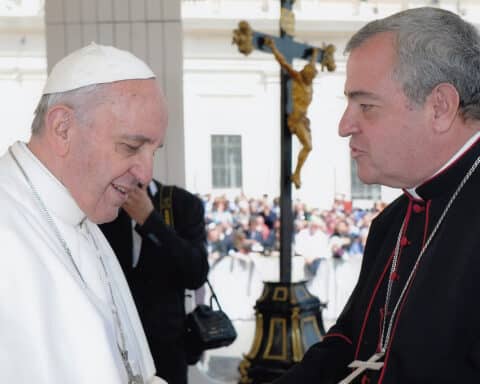This is the second of a special two-part series marking the 20th anniversary of the passing of the Charter for the Protection of Children and Young People (known as the Dallas Charter). Part 1 can be found here.
When the U.S. Conference of Catholic Bishops passed the original Charter for the Protection of Children and Young People in June 2002, it marked a beginning, not an end, to their efforts to safeguard children in the Church.
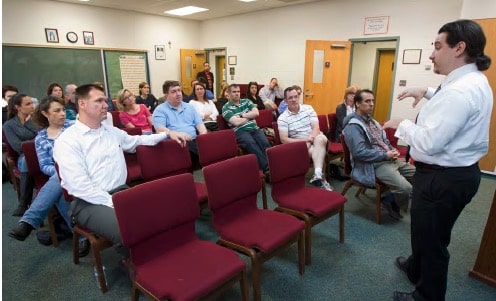
The charter’s 17 articles called on bishops and dioceses to reach out and try to help those who are victim-survivors of clerical sexual abuse of minors, to investigate all allegations of sexual abuse of minors by priests or deacons, to report such allegations to civil authorities, and to remove from ministry any men with even one substantiated incident of sexual abuse of a minor. It led to the establishment of USCCB’s Secretariat for the Protection of Children and Young People and National Review Board, which is made up of laypeople.
But what might be the most significant change, according to victim-survivors, is the creation of safe environment programs. Those include background checks on employees and volunteers who come in contact with minors in Catholic settings, including parish ministry and Catholic schools, as well as training for those same adults, and for children, to help them recognize situations that could lead to abuse or allow abuse to happen — all with the goal of stopping abuse before it starts.
“The single most important change of all were the articles that were enacted at great financial cost to the Church,” said Teresa Pitt Green, a victim-survivor of sexual abuse by a priest when she was a child. “A child protection program was put in place that is a leader in the world. U.S. Catholics need to take a breath and say, ‘wow.'”
Damage on both sides
It has not always been an easy path. More than 20 U.S. dioceses have declared bankruptcy since 2002, seeking to protect their ability to fulfill their mission while paying out settlements to survivors of clerical sexual abuse. Victim advocates decried the lack of accountability in the original charter for bishops who mishandled abuse allegations, and the Church has not come close to recovering from the blow to its reputation and moral authority caused by the crisis.
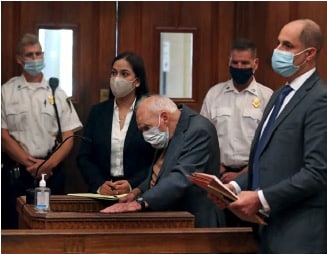
“A huge thing that we lost, something that we’ve sort of come to live with, is our own loss of credibility — clergy and bishops especially,” said Father Thomas Berg, director of seminary admissions and professor of moral theology at St. Joseph Seminary in Yonkers, New York.
“That largely contributed to the idea that, ‘We really don’t care what the Catholic Church has to say about anything, frankly.’ The moral leadership, the weight of morally authoritative teaching, that’s been seriously damaged, and I don’t think we’ve recovered from that.”
Father Berg said the Dallas Charter was a “necessary initial step” but is also concerned about the damage it has caused to priests who have been falsely accused.
“There has been a lot of collateral damage,” he said, noting that dioceses remove priests publicly from ministry while they complete an investigation. If investigators find that the allegation is not credible, how can the priest’s reputation be repaired? Or, he asked, what if a false allegation is deemed credible, and the priest is removed permanently from ministry? The evidence that is needed to find an allegation credible is far less than what would be necessary to prove a criminal charge.
He also would like to see more emphasis on restorative justice instead of “retributive justice.”
“Retribution, in this case, as far as it goes, is perfectly fine,” Father Berg said. “The problem is that … it does focus on punishing the perpetrator, but it can also invite focus away from the victims. It can create an environment in which victims are now treated as litigants. I’ve heard many times from victims how their treatment by the Church — as a litigant in a legal process — has been a retraumatization. Cutting victims a check and making sure their therapy is paid for, that really falls short of what they need from the Church.”
Pitt Green acknowledged that not all dioceses do a good job of ministering to victim-survivors but said poor relationships can’t be blamed on those who have been abused. “You can’t blame the victims for coming forward,” she said.
Many dioceses and their victim assistance coordinators have done well, Pitt Green said, noting that she was very suspicious of efforts to reach out to victim-survivors after the charter was passed. She was in the Diocese of Arlington, Virginia, where she lived at the time, and saw posters and fliers everywhere inviting victims of clergy sexual abuse to come forward. She had already reported her abuse to the diocese where it occurred, and that wasn’t handled well. But she decided to take a chance and call anyway.
“My first words — I didn’t even say hello — I said, ‘Is this just window dressing?'” she said.
The victim assistance coordinator, whom Pitt Green now counts as a friend, said, “You’ll have to decide that,” Pitt Green said.
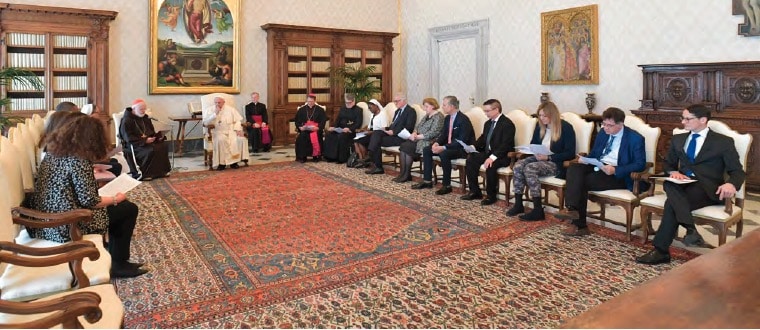
A new process
Michael Hoffman, an abuse survivor from Chicago, has been mostly pleased with how his report was handled.
He is chairman of the Archdiocese of Chicago’s Hope and Healing Committee of survivors, clergy and staff from the archdiocesan Office for the Protection of Children and Youth. The committee created a healing garden, a place of beauty intended to invite reconciliation, hope and healing not only for victim-survivors but for the whole Church. It also hosts an annual prayer service in April, Child Abuse Prevention Month, and an annual Mass for child abuse prevention.
“Many survivors around the country and around the world have not had the experience of real empathy and real compassion for what we’ve been through,” Hoffman said, noting that victim assistance ministries around the country are not all the same. “That piece should be discussed. We don’t want to minimize these things into little check boxes. It’s got to be legitimate culture change and sustained efforts of healing over time. I think there are pockets where some of these things are going well. Then there are pockets where these things are not going very well.”
While Hoffman said the Archdiocese of Chicago handled his report well, not all of his experiences have been positive. He recalled going to the required safe environment training at his parish because he wanted to coach his children’s sports teams. He had already disclosed his abuse to his family and the archdiocese after reading a 2006 newspaper article about other people from his boyhood parish who were abused by the same priest, but he had not yet published his book about it, “Acts of Recovery: The Story of One Man’s Ongoing Healing from Sexual Abuse by a Priest,” and his story was not widely known.
During the training, participants were in small groups, and the man next to Hoffman, someone he knew and had been friendly with, started talking about the child in the video they had watched who was portraying a victim of abuse.
“He said, ‘The child was weak,'” Hoffman said. “‘My boys aren’t weak. It wouldn’t happen to them.’ I just sat there with my fists clenched under the table.”
A few years later, when Hoffman was chairman of the parish school’s athletic board, it fell to him to persuade another father, a man he counted as a friend, to participate in safe environment training. The man refused, saying he didn’t need to because he would never abuse a child, which Hoffman said missed the point.
“I said, ‘OK, but you aren’t going to coach your kids,'” Hoffman said. “That’s what the Dallas Charter did. It laid these conversations out for the public to see. I think those are good outcomes that affect all of us. I think the Dallas Charter and all these processes and procedures should be talked about near constantly. Let’s not talk about it only once. Let’s be transparent and disclose everything. I think transparency and disclosure will help keep children safe.”
Such child protection programs, including training, background checks and budgets for victim assistance and safe environment programs, cost U.S. dioceses, eparchies and religious institutes almost $54.5 million in 2020, according to the annual report released by the USCCB’s Secretariat for the Protection of Children and Young People. While high, that number is dwarfed by the almost $342.3 million paid out in settlements, attorneys’ fees and other costs related to allegations.
But it is, perhaps, the most effective thing the charter did.
“Now, we can’t go into any parish and say, ‘I want to help with the youth group,'” said Deacon Bernie Nojadera, executive director of the secretariat. “You’ve got to fill out forms, provide referrals, and then, by the way, we have to do a background check and do our safe environment training.”
Deacon Nojadera said the safe environment training and mandated reporter training — for people who work with children and are required to report suspected child abuse to civil authorities — have built confidence among priests, teachers and volunteers that they know when they need to do something, and, when that occurs, they know what procedures to follow.
“The creation, the development and the use of mindfulness, the situational awareness, the competence, the ability to be observant,” he said — “if anyone sees or reasonably suspects instances of abuse, they know how to report. They are able to carry that out with competence and confidence. … We’ve now been able to empower people. We’ve now been able to give a voice to those who need a voice. We’ve been able to accompany [survivor-victims]. We’ve been able to develop and grow relationships with some of our survivor-victims, and they have helped us.”
|
— Michael Hoffman |
Decrease in cases
The effectiveness of the charter can be traced by experiences such as those that Hoffman and Pitt Green have had, as well as by the number of dioceses found in compliance with the charter in annual audits — themselves required by the charter — and by the number of children and adults trained on safe environment practices, the number of background checks conducted and the number of allegations reported, as well as when the incidents in those allegations took place.
According to the 2020 annual report, released in November 2021, 3,946 people reported 4,250 incidents of abuse in the year from July 1, 2019, to June 30, 2020. Of those, 22 were still minors at the time of reporting.
The Causes and Context of Sexual Abuse of Minors by Catholic Priests in the United States, 1950-2010, complied by researchers from the John Jay College of Criminal Justice of the City University of New York, found that the bulk of the reported incidents took place in the 1960s, 1970s and 1980s, mirroring the findings of a 2004 report from John Jay College.
However, larger numbers of cases were reported in 2019 and 2020, after the summer of 2018, when news of alleged sexual abuse of minors and adults by then-cardinal Theodore McCarrick broke and a Pennsylvania grand jury released a report detailing 70 years of abuse allegations in six dioceses.
Having clerical sexual abuse in the news seemed to make it more likely for people to report allegations, just as happened in 2002.
“I don’t think any diocese was left untouched or unscathed by the scandal,” said Bishop David Kagan of the Diocese of Bismarck, North Dakota. “After the charter, as dioceses had to conform to what the charter required, more and more people came forward. While it was a small percentage of the total number of Catholic priests, that doesn’t change the tragedy of it. One case is too many.”
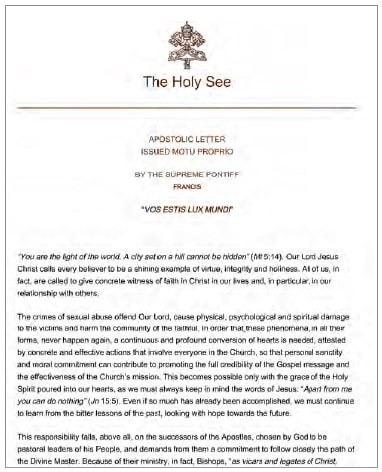
Meanwhile, a number of other U.S. institutions, including other churches, athletic organizations, youth development groups such as the Boy Scouts, and public schools have had to reckon with their own sexual abuse crises, as have Catholic Church leaders in other countries who may have once dismissed the crisis as U.S. problem. In 2014, Pope Francis announced the establishment of a 17-member Pontifical Commission for the Protection of Minors, headed by Cardinal Seán P. O’Malley, appointed archbishop of Boston after Cardinal Bernard Law’s resignation in 2002. Cardinal O’Malley was also appointed to lead the dioceses of Fall River, Massachusetts, and Palm Beach, Florida, after scandals related to clerical sexual abuse of children.
The commission now has the mandate of encouraging and supervising the world’s bishops in their implementation of Vos estis lux mundi, a 2019 papal document establishing procedures for reporting clerical sexual abuse, establishing survivor support centers and holding bishops and religious superiors accountable.
The document followed a kind of clergy sexual abuse summit in which representatives of all the world’s bishops’ conferences were called to Rome to discuss what they were doing in the way of preventing and reporting cases of abuse. The U.S. bishops, for their part, agreed in 2019 that they must be accountable for their handling of abuse cases.
Earlier this year, Pope Francis brought the commission’s work into the Dicastery of the Doctrine of the Faith, making a “fundamental part of the structure of the Church’s central government,” according to Cardinal O’Malley, and asked the commission to produce annual audits of what the Church is doing, and what it needs to be doing.
|
— Bishop David Kagan |
‘When is this going to end?’
Sara Larson, executive director of Awake Milwaukee, a lay group of Catholics formed in 2019 to respond to clerical sexual abuse in the Church by supporting and listening to victim-survivors and advocating for changes to make the Church safer, said one of the biggest dangers she sees now is complacency.
“There’s this idea that we all came together as a Church and we fixed the problem and we can move on,” she said. “That story is just not true. We think about it in the wrong way. That frustration for a lot of people really spilled over in 2018. It was, ‘Wait, there was still a problem?’ It hadn’t been fixed, and not everyone was dealing with integrity. I think the other real challenge right now is a kind of issue fatigue. There was kind of a groundswell of attention and support in 2018 and 2019. What I really believe the Church needs is people who are really committed to sticking with this issue in the day-by-day and week-by-week work.”
Deacon Nojadera said that he has run into the same attitude at trainings and at conferences.
“People will say to me, ‘Bernie, when is this going to end?'” he said. “I say without hesitation, ‘the Second Coming.’ Now that this is out in the open, there will always be people coming forward, there will always be people who are taken advantage of. There will always be people violating boundaries. That’s the reality of being vigilant and continuing to be aware.”
It’s important, Deacon Nojadera said, to keep up with everything, especially safe environment training, which lay staff members and volunteers take with them into other areas of their lives.
“If you are going to be effective in safeguarding, you need to drill, you need to practice, you need to develop the muscle memory,” he said. “You know who the points of contact are, you know how to document, you know how to report.”
Bishop Kagan said that perhaps one unintended consequence of the charter was that priests pulled away from children, afraid that something like placing their hand on a child’s shoulder could lead to allegations of abuse.
“It was a natural reaction, and it wasn’t a good reaction,” Bishop Kagan said. “Time has rectified that a great deal. In large part, the rectifying went along [with] implementing the requirements of the charter and the essential norms, which the USCCB worked on and the Holy See approved. … We’ve become very diligent as well as vigilant about child protection in Church life, whether it’s a parish school or religious education or another ministry. You can never be too careful.”
|
— Deacon Bernie Nojadera |
What’s next?
Going forward, Deacon Nojadera said, the Church must continue to pay attention to the selection and formation of men called to priesthood, and to the efficacy of prayer.
“There’s got to be mentoring and ongoing formation for our priest candidates, making sure we get healthy and holy men going forward, [making] sure they use their support systems, [making] sure they maintain healthy and holy relationships with their brother priests and laypeople, and lifelong training and formation for our lay people,” he said. “We need to pay attention to it in our prayer life and in our community prayer.”
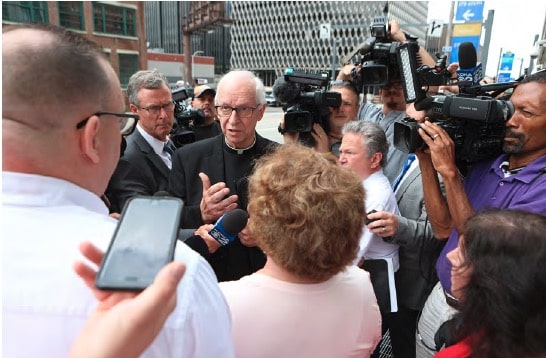
On a practical level, Larson said, the Church should heed the words of former National Review Board chair Francesco Cesareo, who in June 2019 said the fact that so many dioceses have passed the audits before having problems come to light means that the audits should be strengthened.
“A strengthened audit would provide a means for improving your dioceses’ existing methods to protect and heal,” Cesareo told the bishops, according to Catholic News Service. “Virtually all your dioceses, including those where problems came to light under the microscope of the media and attorney generals, have easily passed the audit for years since the bar currently is so low. Now is the time to raise the bar on compliance to ensure the mistakes of the past are not repeated.”
Larson said the Church must follow the example of Awake Milwaukee and listen to survivors to learn both how better to reach out to them and how to prevent future abuse. It’s not just people in the hierarchy or institutional Church who need those lessons, she said.
“What I hear from survivors is the way the Church continues to break their hearts,” Larson said. “Not just bishops and victim assistance coordinators and parish priests, but also laypeople in the pews. We really need to start from listening to and learning from the voices of survivors, not as people for us to serve but as valuable members of the Body of Christ. They really are the experts on this. They are some of the most important, prophetic voices in the Church today, and they are speaking hard truths that we as a Church need to hear.”
Pitt Green, who reconnected with the Church following the Dallas Charter after decades away, credits much of that reconciliation to people in the Church finally listening to her.
“My favorite thing is to remind people that we know who wins in the end,” Pitt Green said. “No matter what the evil is, we can look it square in the face. We don’t have to be afraid. We just have to be firm, and brave.”
Michelle Martin writes from Illinois.

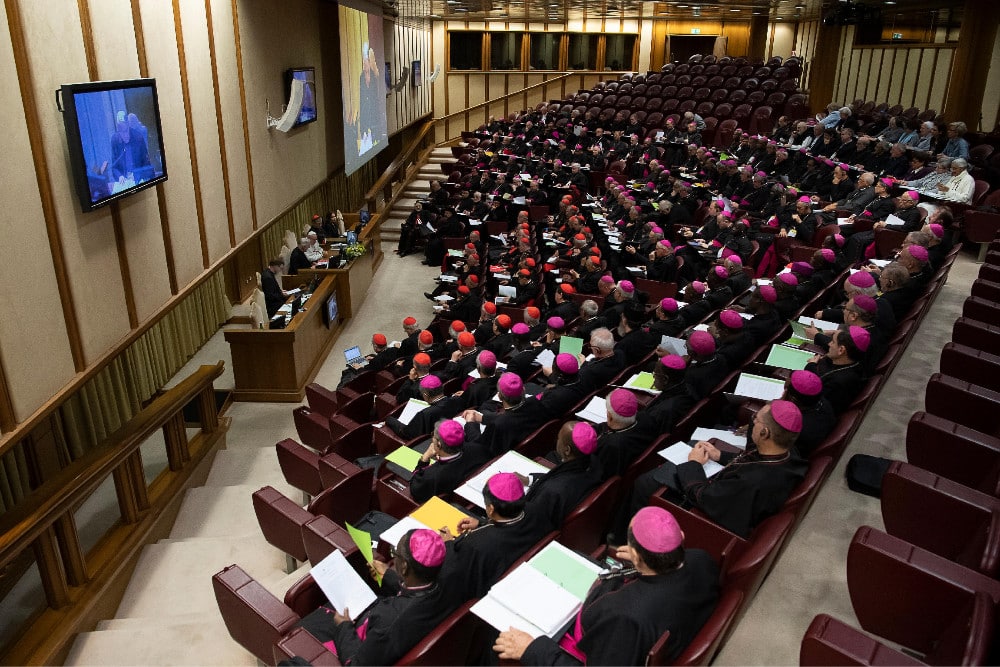
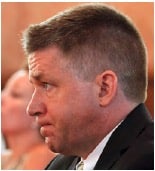 “I think the Dallas Charter and all these processes and procedures should be talked about near constantly. Let’s not talk about it only once. Let’s be transparent and disclose everything. I think transparency and disclosure will help keep children safe.”
“I think the Dallas Charter and all these processes and procedures should be talked about near constantly. Let’s not talk about it only once. Let’s be transparent and disclose everything. I think transparency and disclosure will help keep children safe.”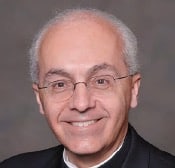 “After the charter, as dioceses had to conform to what the charter required, more and more people came forward. While it was a small percentage of the total number of Catholic priests, that doesn’t change the tragedy of it. One case is too many.”
“After the charter, as dioceses had to conform to what the charter required, more and more people came forward. While it was a small percentage of the total number of Catholic priests, that doesn’t change the tragedy of it. One case is too many.”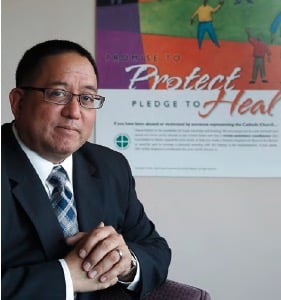 “People will say to me, ‘Bernie, when is this going to end?’ I say without hesitation, ‘the Second Coming.’ Now that this is out in the open, there will always be people coming forward, there will always be people who are taken advantage of. There will always be people violating boundaries. That’s the reality of being vigilant and continuing to be aware.”
“People will say to me, ‘Bernie, when is this going to end?’ I say without hesitation, ‘the Second Coming.’ Now that this is out in the open, there will always be people coming forward, there will always be people who are taken advantage of. There will always be people violating boundaries. That’s the reality of being vigilant and continuing to be aware.”